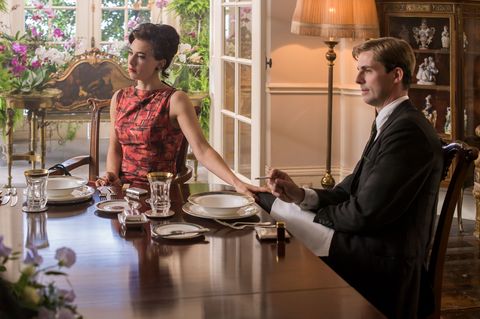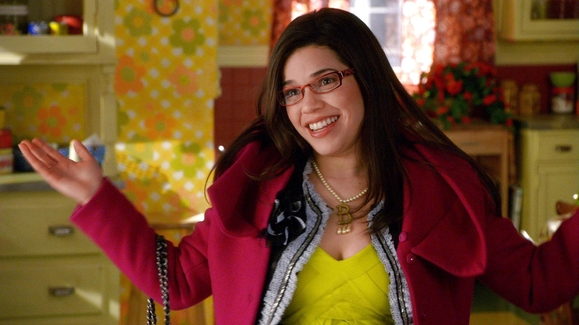What is a wardrobe anyway?
According to a quick Google search: “In media, the wardrobe department is responsible for dealing with clothing, apparel, and accessories worn by actors 1. It includes selecting, storing, tracking, and maintaining these clothing items. The wardrobe department also handles accessories such as sunglasses, ties, hats, jewelry, and shoes 2. In film production, the wardrobe department is divided into a 'making wardrobe' for pre-production and a 'running wardrobe' for maintaining costumes during the shoot 3. The wardrobe of a person can reveal character traits and emotions through fit, shape, colors, and details of their garments 4”
This is essential…
Because wardrobe makes a show believable. Without a proper wardrobe, the production can confuse an audience. Plus, wardrobe is essential for telling the story. It can express personality, plot changes, and character development. Although it seems like a small aspect, a wardrobe/costume expresses meaning and understanding to production, while also defining it. To make a production come across as a 1950s film, actors must have the correct 1950s style wardrobe and looks to make the film believable. Such as this tv show: The Crown.
Examples!
One prime example of how wardrobe/costumes can convey meaning is the show Ugly Betty (2006-2010). As previously mentioned, (on numerous occasions…I know...it is an amazing show), Ugly Betty is a great media text to critically analyze. It is perfect for a media studies student/enthusiast because of the great detail in wardrobe, script, camera work, casting, editing, and storyline, it all comes together to create a beautiful, original production that just makes sense. Ok, that's the last time (actually…no promises). The wardrobe of this show is particularly important because it surrounds a girl who works at a fashion magazine: Mode. It is a fictional magazine, but nods to real life fashion magazines such as Vogue. In the show, Betty (the main protagonist) dresses very colorful, with a mixture of patterns, to reflect her innocence and bubbly personality. This juxtaposes the wardrobe of the employees of Mode, who dress quite couture-like with darker tones to contrast Betty’s personality and reflect their dislike towards her (apart from them side-eying her at any given moment).
Although Betty’s style stays consistent– still full of color– it is put together in a cleaner way. One noticeable change throughout the four seasons is as they progressed, Betty’s heels will get higher. This could symbolize her moving up rank in the magazine business, or her conforming to this fashion magazine world/business. Furthermore, the mixture of patterns seen in the 1st and 2nd season, now become less apparent and switched with matching patterns and solid colors in the 3rd and 4th season. This added detail represents Betty’s growth.
All this to show that it is not just a plot/script that makes a character development clear for the audience, but all aspects in production such as wardrobe are just as important, to convince the audience of change. So here is the visual example of her change:
Season 1
Season 2
Season 3
Season 4
How is this going to go…
For my own production (aka 2-minute film intro), to reflect two different settings/feelings, for the section that pictures the couple together prior to the long distance, to be colorful clothing/full of life with no worry in the world, just them two, together. Ideally, also, I would like to have a couple match (when I say this, I'm referencing myself and my boyfriend). Whereas, when the section that cuts to the girl by herself, will be greyer tones of clothing, much less put together, as if life was sucked/taken from her. This is so the audience sees the impact of her boyfriend leaving, and it was not so easy to manage as she expected. Yes, writing up a banger here, Hollywood hit me up.
I'm going to start including my schedule in every blog so you can see in real time what I get done (and don’t get done…)
January 18th-20th: Further blogs on idea
January 27th: blogs due
February 1st
chose filming location
February 3rd: Blogs due, reveal title of film intro
February 7th: ask Frances (again) to be in video and write the plot/dialogue [half done]
February 10th: figure out costumes, camera, and editing software (AND BLOGS DUE)
February 14th: Get filming down for first 45 - 60 seconds of film intro
February 17th: Blogs due
February 24th: Blogs due
February 28th: Get filming done for the second half
March 1st: Save the day for any refilming needed
March 3rd: Begin editing process
March 7th: See if you have time to stop by You Media.
Marth 10th- 11th: complete CCR
March 17th - 21st: Edit CCR and finalize the film intro
:max_bytes(150000):strip_icc()/thecrown_206_unit_00077_r_crop-2000-840fe0dead624431a235be565e858e96.jpg)




No comments:
Post a Comment